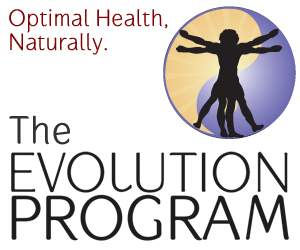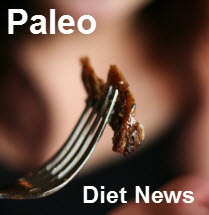The Paleo Diet and The Asian Paradox
Image Courtesy of Wikipedia
If you’ve been living the Paleo, Primal, or general low-carb lifestyle for any amount of time, you’ve almost certainly heard someone say something along the lines of, “If Carbs are so bad, how come the Chinese eat a ton of rice, but still stay thin?!”.
This is actually a good question. After all, if starchy carbs cause an insulin response, and the Asian people eat a pretty good amount of rice at every meal, why wasn’t Diabetes historically a problem for the Asian nations?
As luck would have it, Mark Sisson published an article on the first of February, entitled “The “Asian Paradox”: How Can Asians Eat So Much Rice and Not Gain Weight?” that addresses this very question.
“How the Primal community loves the concept of a dietary paradox. How we eagerly point to its various manifestations as supportive evidence for our way of eating, living, and moving. You know the French Paradox and how it confounds the experts. To mention all those smug surrender monkeys with their brie and their butter and their duck confit and their Gauloises and their seeming imperviousness to heart attacks is to make Dean Ornish binge on bran and pull out tuft after tuft of frizzy hair. And then there’s the lesser-known Israeli Paradox, which attempts to answer why Israelis have skyrocketing rates of heart disease despite a skyrocketing intake of “healthy” omega-6 fatty acids. In its wake, Walter Willet might be found weeping into a mug of safflower oil. There’s even an American Paradox – those who ate the most saturated fat had the least coronary heart disease – that had the minds of researchers thoroughly boggled.
All those paradoxes work out in “our favor.” Saturated fat gets off pretty much scot-free and omega-6 vegetable oils get raked over the coals (and, presumably, oxidized). And if people were honest about things, they would see these paradoxes not as paradoxes, but as reasons to reevaluate previously-held beliefs about health and diet.
But what about the Asian Paradox? How can Asian countries consume so much white rice and so many noodles and remain so thin? If carbs make you fat, how do they eat so many of them? This is a question I get from Mark’s Daily Apple readers all of the time, so it’s about time I gave a thorough response.
First of all, I want to confirm that Asia eats a lot of rice. It may be a “side dish” or not the main course, but there’s no dancing around the fact that a lot of rice gets eaten – the stats (PDF) are pretty clear on Asian rice consumption. I briefly covered the Asian Paradox in the rice post, but I think the subject deserves more than a brief paragraph. So, today, I’m going to explain why the Asian Paradox (like all “paradoxes,” really) isn’t actually a paradox, and why I consider it to happily coexist with all of the other Primal-friendly paradoxes. I’ll also explain why I think the Asian Paradox offers us Primals a chance to evaluate our own beliefs (because that’s the only honest thing to do).”
Mark goes on to explain how Asian people on the whole are very active, and move with purpose in everything they do, which is of course a stark comparison to the slow laid-back movement of most of the people on the United States. He says that on the whole, Asian people are more active than we are.
“I think daily activity levels are probably the biggest determinant in tolerance to carbs. In American cities where walking is required or more convenient than driving, like New York, people are generally healthier, slimmer, and longer-lived. Things are changing, though. In 1989, 65% of Chinese performed heavy labor on a daily basis. By 2000, that proportion had dropped to 50% – still far more than in Western nations, but the downward trend is clear. You’ll notice on that same page that the proportion of overweight children also increased by the year 2000.”
Mark then describes how very nutritious the traditional diets of these people are. He describes traditional dishes from several Asian cultures, and paints a picture that shows exactly how nutrient dense these food would be, before the integration with more western nutrition practices. It’s true that historically, Asian people weren’t eating fast food like Micky Dee’s, and Burger Queen etc…..they were eating real, wholesome, nutrient dense, unprocessed foods that kept them healthy.
“Luckily for them, rice, especially white rice (the favored type across most of Asia; as a Thai friend of mine who grew up there and came to Hollywood in the 60s told me, “rice bran was for the chickens”), is a mostly non-toxic source of glucose. On the grain spectrum, where wheat and other gluten grains reside at one end, rice relaxes at the opposite end. It’s not “good,” but it’s also not “bad.” It just is. It’s pretty much neutral. Whether you can handle (or need) the glucose load is another thing, but you can rest assured that white rice will be generally free of gut irritants, phytic acid, and deleterious lectins. If you’re eating wheat, on the other hand, you have gluten, wheat germ agglutinin, and a host of other antinutrients with which to contend. And, as Ned Kock’s masterful (and under-appreciated) series of stats posts on the China study data suggests, rice intake is associated with a reduction in cardiovascular disease while wheat flour intake is associated with an increase in cardiovascular disease. The upper level of rice intake did correlate with a slight increase in CHD, however, but not a major one.
All else being equal, people will be healthier on a rice-heavy junk food diet than on a wheat-heavy junk food diet.”
Great statement Mark! “people will be healthier on a rice-heavy junk food diet than on a wheat-heavy junk food diet”. That’s sounds pretty spot-on to me.
“So, like every other one before it, the Asian Paradox topples: there is actually no paradox. Asian countries remain lean (if they’re actually lean, that is) on a rice-heavy diet by virtue of lots of low-level aerobic activity to promote insulin sensitivity, lots of nutrient-dense food to go with that rice, and because rice is the least offensive grain.”
So there we have it, the Paleo Diet and The Asian Paradox. I don’t feel like I even need to add any more commentary. I’m going to bed. G’night!
-
If you found this article useful, please click the ‘LIKE’ button below to share on Facebook. We also invite you to leave comments, and join the Paleo Diet News discussion!
Go to www.undergroundnutritionist.com, and download my 30-Day UN-Challenge eBook now……It’s a step-by-step guide to your personal health revolution.
Barry Cripps is a Paleo-based Nutrition and Wellness Consultant, who operates out of Bowling Green, Kentucky.
For more information please visit: www.undergroundnutritionist.com





